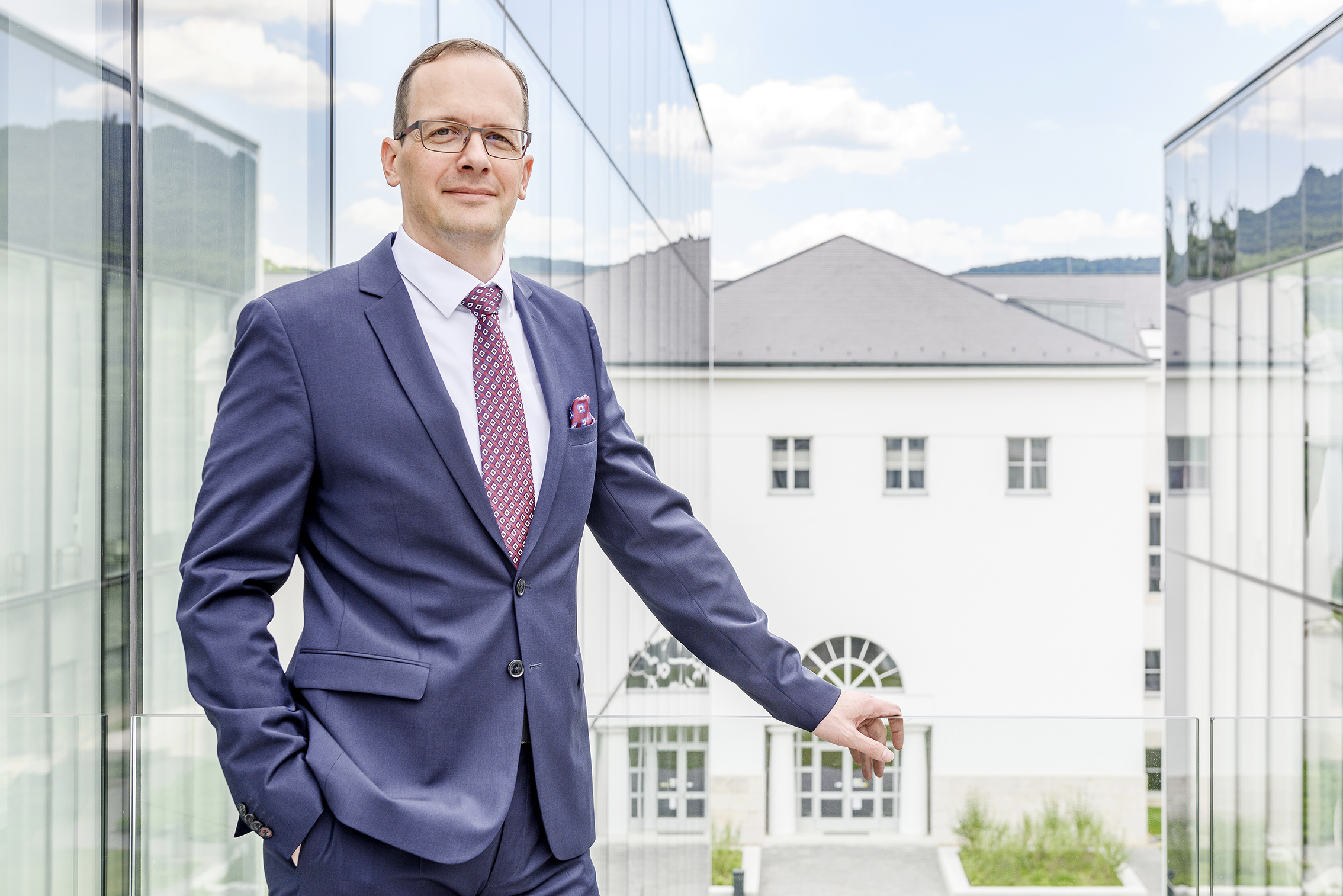Science is Universal: Hungary Aims to Promote ‘Brain Circulation’ at its Research Sites

Dr. István Szabó, Vice President for Science and International Affairs at NKFIH.
The National Research, Development, and Innovation Office (NKFIH) is launching a website to promote Hungary’s research infrastructure. The Budapest Business Journal asked Dr. István Szabó, Vice President for Science and International Affairs at NKFIH, the rationale behind the website, its target audience, and the results hoped for from it.
BBJ: The NKFIH will soon launch a webpage on research infrastructure. Why is this necessary, and what audiences will the website target?
István Szabó: Research infrastructure and its scientific output have always played a critical role in any country’s research-development-innovation (RDI) performance. There have been a significant number of top-class research infrastructures in operation for many years (some even for decades) in Hungary, often working in what we may call “scientific isolation” or the “ivory tower of science.”
Today, more than ever before, our world and societies need complex solutions to complex problems. Now researchers and research infrastructures are seeking cooperation opportunities to deal more efficiently with the challenges we are all facing today. The various scientific domains, physical sciences, health sciences, social sciences, and so on, need to work together to find complex solutions to complex problems. Now, effective cooperation doesn’t happen locally, and here I need to emphasize how fundamentally international science is. To show researchers in other countries the scientific assets, know-how, and experience Hungary possesses, to show them research projects they could contribute to, we need to put Hungary’s top research infrastructure on the map of the world. We need to make our best scientific assets clearly visible and accessible.
We began working on this in late 2020, when we compiled the most up-to-date research infrastructure-specific publication, showcasing around 28 top-of-the-line research infrastructure establishments in Hungary. A year later, in December 2021, we edited an even more comprehensive publication, and as a newly introduced tradition, “Excellent” and “Emerging” Research Infrastructure certificates were awarded to nearly 60 infrastructures and clusters. The next step in this process was creating this new website, researchinfrastructures.hu. We think the site has a clean but visually attractive look and its menu makes searching and interaction with research infrastructures effortless. The primary audience of the new website will be the community of international researchers; hence at this time researchinfrastructures.hu is available only in English. To reach our desired audiences, we’ll promote researchinfrastructures.hu on various online channels throughout 2023.
BBJ: Tell us more about the “Excellent” and “Emerging” Research Infrastructure titles you mentioned.
ISz: Between late 2020 and the spring of 2021, we conducted a nationwide survey to evaluate the preparedness and international embeddedness of Hungary’s research infrastructure portfolio. Following the survey and the evaluation process, the National Research Infrastructure Committee decided to introduce the “Excellent” and “Emerging” research infrastructure titles as a sign of recognition toward those concerned. A total of nearly 60 such titles and certificates were awarded to top infrastructures and newly developing infrastructures and clusters. We also introduced a “seal of excellence” as the visual representation of research excellence demonstrated by the selected institutions and research facilities. We’re hoping this concept can be further developed into a fully-fledged scientific brand.
BBJ: Why is cooperation important between research, development and innovation?
ISz: No one would question that scientific research is indispensable to finding knowledge-based solutions to grand societal challenges of macro-regional and even global relevance. We must emphasize that the relationship between research and innovation shows a diverse landscape and is mostly a very complex phenomenon; a “one size fits all” model simply doesn’t exist. The time between a breakthrough in basic research and an application at an industrial scale varies and is difficult to predict. Efforts must, nevertheless, be made to shorten the gap between scientific advances and their application.
Research infrastructures (RIs) constitute a fundamental pillar of research and innovation, providing researchers, innovators, and other stakeholders with unique knowledge and expertise, experimental devices and technical resources. To develop state-of-the-art technologies, potentially feeding into innovations, it is vital to perform cutting-edge fundamental- and applied research. RIs act as an amplifier in research, development and innovation, contributing to regional development through offering highly skilled jobs and stimulating the growth of new businesses, spin-offs, supply chains and services. RIs support industrial research and development efforts as technology accelerators, enhancing competitiveness. They can also play a critical role in creating knowledge-based hubs and innovation centers where science, education and innovation can team up to advance new collaborative models, contributing to the development of regional economies.
BBJ: What is the potential for international cooperation between Hungarian research infrastructure and foreign partners?
ISz: I would like to put this question into a slightly broader context. Science has never stopped at the borders of any given country, because science should not be limited in any way. So, science is universal; as such, it has always required the collaboration of researchers from different countries, even during the cold war era. As a soft diplomacy tool, RIs served the promotion of peace, keeping communication channels open and building trust between nations and cultures.
The benefits of RIs, as enablers of scientific achievements, have to overarch the borders as well. In this context, the EU intends to develop a fully functional and operational European RI ecosystem, which efficiently integrates European, national and regional RIs of various sizes and disciplines. And cross-border collaboration does not stop at the EU borders, either. We need to stress the importance of openness and international cooperation in RIs to advance science and scientific diplomacy further and implement a global RI network to tackle global challenges for the benefit of all. RIs with a strong international focus benefit from exchanging experiences and good practices, enriching their outputs by sharing access to their scientific data and information. They attract talent and, therefore, act as platforms for talent circulation. We aim to make RIs in Hungary visible and accessible partners of this ever-developing global network.
BBJ: What results are expected from research infrastructures?
ISz: With the launch of this website, we will make the services of our top research infrastructures more widely visible. We intend to promote and strengthen relations between higher education, research, innovation and services to industry as well as to society at regional and European levels. We would like to enhance “brain circulation” and invite more researchers from abroad to visit our RIs. We believe this international engagement will generate more scientific collaboration and increase the number of successful Horizon Europe project proposals.
To unlock the full potential of our RIs, they need to provide long-term, state-of-the-art scientific output and services and make their services easily and readily accessible. More efforts will be required in the future to ensure the long-term sustainability of our RIs and support their connection with the innovation ecosystems and industry. We believe that the smaller and medium-scale RIs of national importance deserve higher visibility to maximize their scientific impact on Europe’s research infrastructure landscape. Our website intends to contribute to this effort.
This article was first published in Invented in Hungary 2022-2023 on December 2, 2022.
SUPPORT THE BUDAPEST BUSINESS JOURNAL
Producing journalism that is worthy of the name is a costly business. For 27 years, the publishers, editors and reporters of the Budapest Business Journal have striven to bring you business news that works, information that you can trust, that is factual, accurate and presented without fear or favor.
Newspaper organizations across the globe have struggled to find a business model that allows them to continue to excel, without compromising their ability to perform. Most recently, some have experimented with the idea of involving their most important stakeholders, their readers.
We would like to offer that same opportunity to our readers. We would like to invite you to help us deliver the quality business journalism you require. Hit our Support the BBJ button and you can choose the how much and how often you send us your contributions.







